Writing Workshop
Writing Workshop in a First Grade Classroom - How We Plan Our Stories
The teacher introduces her class to a new strategy they can use to help them plan out the events of their stories before they start writing
Writing Workshop in a First Grade Classroom - How We Plan Our Stories Director’s Cut
This version of the How We Plan Our Stories lesson for additional "look fors" and tips.
Teaching children to write - to express their ideas clearly and creatively, and to find joy in the process - is a complex task. To grow as writers, children need explicit instruction in the craft, mechanics, and process of writing, choice in what to write about, and plenty of time to practice.
Writing Workshop is an instructional practice designed to help children become confident and capable writers. During Writing Workshop, children have time to work independently and with their peers. They engage in the writing process by selecting topics, drafting, revising, editing, and publishing their original work. They receive explicit instruction in the craft of writing from exploring genre, to organizing their pieces, to word choice, style, and mechanics.
The workshop structure encourages children to think of themselves as writers and take their writing seriously. It gives children the skills to express their important thoughts and celebrates the fact that their stories and ideas matter and are worth expressing.
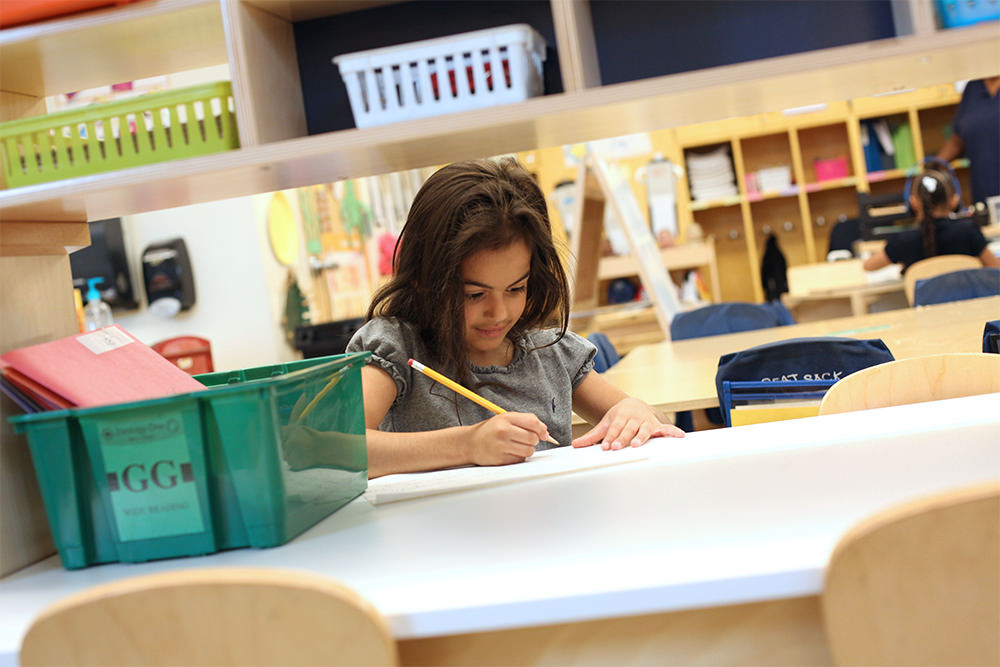
What is Writing Workshop?
Writing Workshop is an organizational framework for teaching writing. The framework consists of three components: the mini-lesson, work time, and share time. The Writing Workshop structure is an efficient and effective way to deliver writing instruction to meet the needs of all learners.
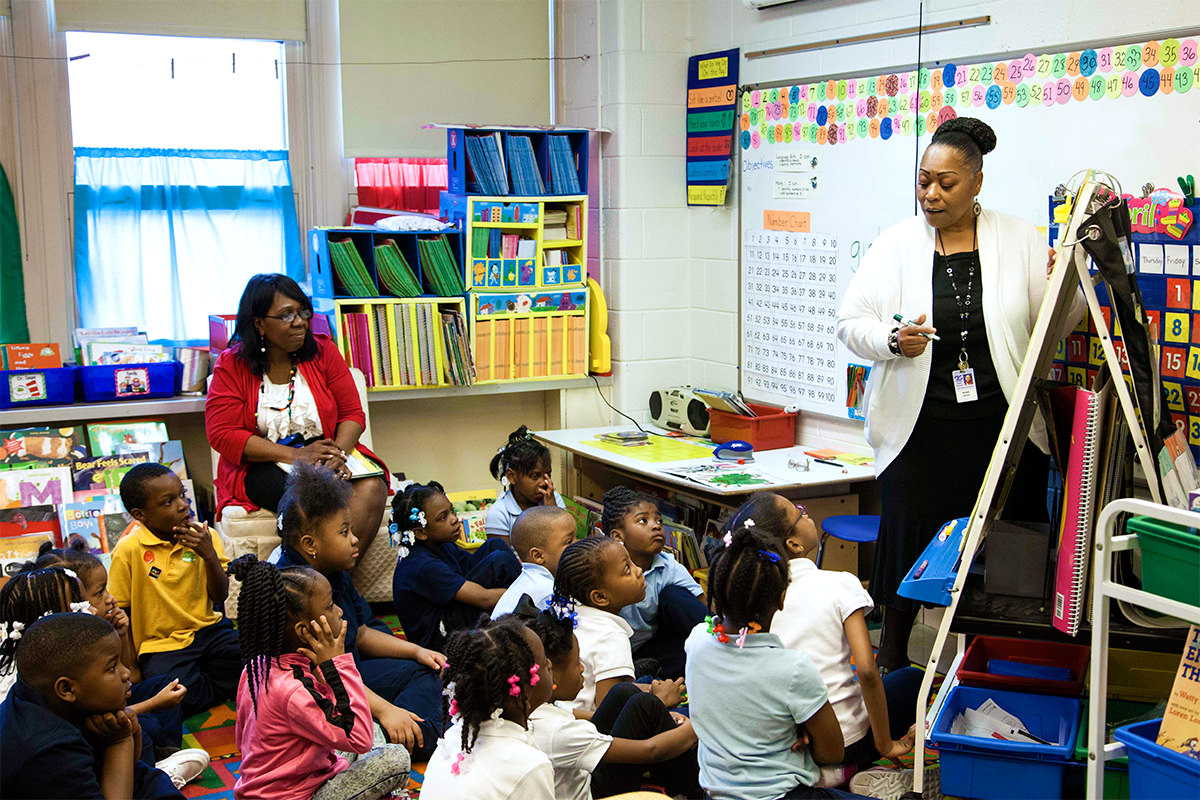 Each Writing Workshop session begins with a mini-lesson, during which you explicitly teach the children a specific writing skill or strategy over the course of five to 15 minutes. Use the mini-lesson to address the writing needs of your children as determined by your curriculum, state and local standards, and most importantly, formative assessment. Your conference notes and the children’s writing help you identify a primary literacy objective for the mini-lesson. During the mini-lesson, explain what you are teaching and how it will help the children become better writers. Model and demonstrate the use of the skill or strategy, thinking aloud throughout the process. Give the children a chance to try out the skill or strategy right there on the carpet.
Each Writing Workshop session begins with a mini-lesson, during which you explicitly teach the children a specific writing skill or strategy over the course of five to 15 minutes. Use the mini-lesson to address the writing needs of your children as determined by your curriculum, state and local standards, and most importantly, formative assessment. Your conference notes and the children’s writing help you identify a primary literacy objective for the mini-lesson. During the mini-lesson, explain what you are teaching and how it will help the children become better writers. Model and demonstrate the use of the skill or strategy, thinking aloud throughout the process. Give the children a chance to try out the skill or strategy right there on the carpet.
The mini-lesson is immediately followed by work time, the component that is the heart of Writing Workshop and occupies its largest block of time. During work time, the children write – both independently and with partners. They apply what they’ve learned from the current and past mini-lessons to their writing. It is during work time that you can differentiate your writing instruction. To do this, conduct one-to-one writing conferences with children, taking careful notes throughout each conference. You might also work with small groups of children who have similar instructional needs in writing. Increase the amount of writing time as the children’s stamina increases.
Share time comes at the end of the workshop. During share time, two or three children share their writing with the class. Writing deserves an audience, and share time is one of the ways to provide it. The “authors” might show how they’ve applied the day’s mini lesson to their own writing. They might show what they’ve learned about writing or about themselves as writers. Usually only a few sentences will be shared, but sometimes a child will share a completed piece of writing. Share time is motivating for the children, and it provides peer models for them.
Why Writing Workshop?
Being a capable, confident writer is a necessary skill for children to be successful in school and in life. As they progress through the grades, they’ll need to write summaries, reports, critiques, and essays. To be functioning adults, they’ll need to write in both their working lives (e.g., letters, memoranda, and reports) and their daily lives outside of the workplace (e.g., shopping lists, emails, and notes). Through daily writing in a workshop, children can learn to effectively communicate in writing.
Writing Workshop is uniquely structured to help children develop positive attitudes about writing and progress as writers. Through writing, children have voice and agency – a way to express their ideas. This can be a deep source of satisfaction. The Writing Workshop structure provides manageable amounts of direct, explicit instruction that meets the developmental needs of our K-3 children: a lot of support, targeted feedback, and an audience for the children’s writing. Most importantly, the Writing Workshop gives children plenty of writing time. Children can only grow as writers if they have repeated practice and opportunities to write independently.
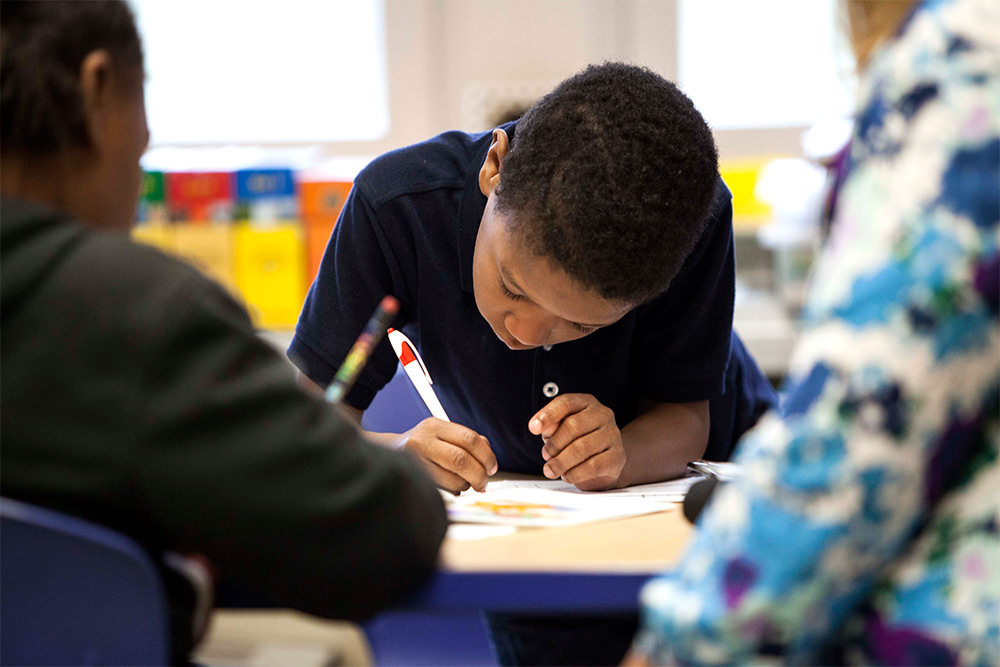
Children are often eager to express their thoughts, ideas, and experiences. Sharing what we know and telling stories is an important part of learning and living in a community. Writing provides a suitable venue for children to share their thinking and ideas. As an additional bonus, writing helps children make sense of, clarify, and develop new learning and thinking. Our carefully planned lessons can facilitate children’s ability to have the voice that they crave. In a Writing Workshop, unlike in settings where K-3 children often copy the teacher’s writing, the children are the authors.
Finally, audience is a critical component of writing. That is, writing is meant to be read. An audience is often found for some of the children during work time, when pairs or small groups of children will read their writing to each other. But most of all, this is the primary focus of share time, the final component of the Writing Workshop. Each day during share time, two to three children have an opportunity to sit in the “author’s chair” and share what they’ve written with others. In classrooms not using the workshop model, the teacher is often the only one who is an audience for writing, sharply reducing the opportunities for children to read their writing to others. This turns writing into a “written assignment” rather than a true mode of communication.
Writing and Reading Connection
Writing and reading are reciprocal processes: reading affects writing, and writing affects reading.
When children read a lot, they become better writers. Each reading experience represents another encounter with writing, which builds knowledge of writing and helps children to understand what good writing looks like and sounds like. This in turn helps to make them more critical readers of their own writing. Reading books across genres helps children learn story grammar, narrative structures, and informational text structures. Then they apply this knowledge to their own writing. Favorite books that are read and reread become mentors for children’s writing.
Writing helps to build and develop reading skills. Our kindergarten and first grade children are actively involved in developing phonemic awareness and phonics skills. When they are working through the spelling of a word during their writing, often using developmental spelling, they are actively applying phonics skills. This has a powerful impact and is much more effective than isolated practice using worksheets. When children access the word wall to use a high frequency word in their writing, they are getting additional exposure to the word. The act of writing the word, which gets reinforced when they encounter it again while rereading their writing, helps the word become part of their sight word vocabulary.
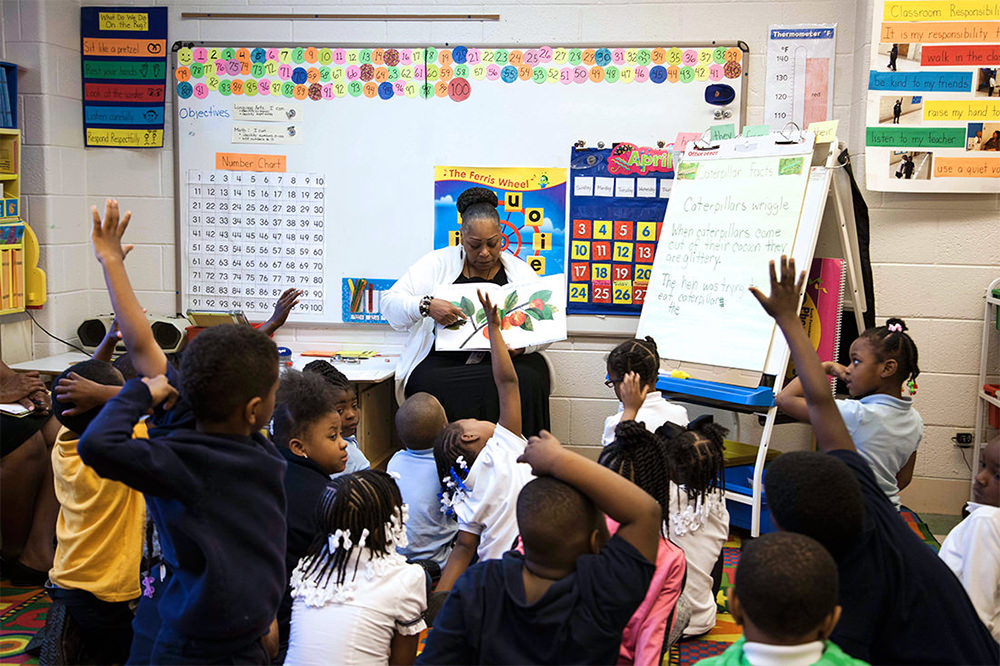 Leverage the reading-writing connection in your read alouds, Reading and Writing Workshop mini-lessons, and shared writing. During read alouds, make a point of talking about the author’s craft and the characteristics of different genres. Draw children’s attention to word choice, style, and the structure of different texts you read and create together. Gradually build anchor charts to capture what you are discovering about writing together and connect the ideas you are learning about to children’s own writing. Highlight the efforts of children who are experimenting with different writing styles and genres during share time.
Leverage the reading-writing connection in your read alouds, Reading and Writing Workshop mini-lessons, and shared writing. During read alouds, make a point of talking about the author’s craft and the characteristics of different genres. Draw children’s attention to word choice, style, and the structure of different texts you read and create together. Gradually build anchor charts to capture what you are discovering about writing together and connect the ideas you are learning about to children’s own writing. Highlight the efforts of children who are experimenting with different writing styles and genres during share time.
Find books to use in your mini-lessons to support children’s instructional needs in writing. For example, if your children are ready for a lesson in punctuation, read Yo! Yes? by Chris Raschka. If the children are overusing the same words in their writing, read aloud Come On Rain! by Karen Hesse. Explicitly teach children to chunk words for both reading and writing by using a book like One Duck Stuck by Phyllis Root.
Collaboratively write a text with the children using the shared writing approach. You are doing the actual writing, but the children are contributing ideas and “helping” with the spelling and conventions to the extent of their abilities. Shared writing produces readable text for all children. Display the text of your completed shared writing lesson and encourage the children to read it when they “read the room.”
Different Types of Writing Instruction
The components of a balanced writing program include modeled writing, shared or interactive writing, guided writing, and independent writing. These four components are based on the principal of the gradual release of responsibility developed by Pearson and Gallagher in 1993.
During modeled writing, you are demonstrating how writing works. You write in front of the children, thinking aloud throughout the entire process. Be sure that all the children can see the writing. Modeled writing is likely to occur in mini-lessons and, of course, Message Time Plus. Shared writing is a practice in which the teacher and the children share the responsibility for writing a text. The children’s role is to verbalize the ideas in the text and to contribute to the spelling and writing conventions to the extent of their abilities. The teacher holds the pen and does the physical writing. The writing is usually done on chart paper and written large enough for all the children to see. The level of child responsibility in shared writing can be increased by employing interactive writing instead. Interactive writing follows the same structure as shared writing, except that the children and the teacher “share the pen.” The teacher selects individual children to come up to write a word or even a letter in the message. When shared writing or interactive writing is completed, the teacher and children usually do a shared reading of the text.
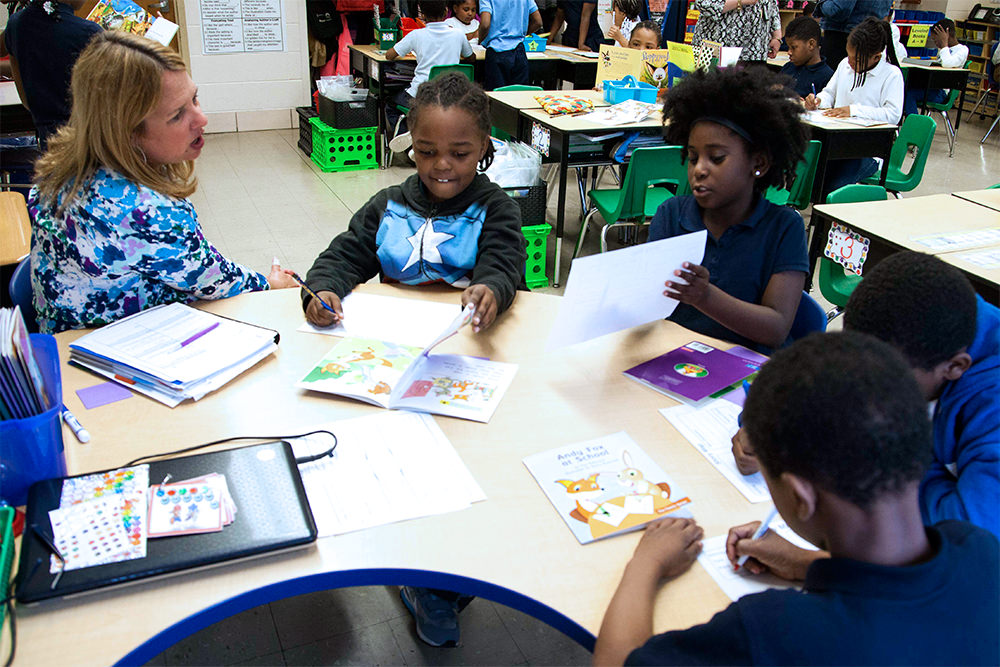
Guided writing is a notable shift in teacher/child responsibility. In guided writing, the child “holds the pen” and is responsible for doing all of the writing. The teacher’s role is that of support. Teachers coach, scaffold, and support children while they are writing. Guided writing usually occurs during one-on-one writing conferences and small group writing sessions.
Finally, independent writing is when children apply all of the important lessons that we have taught them to their own writing. The teacher’s role in independent writing is just to supply time and resources for writing. Independent writing occurs during the work time component of Writing Workshop, in class writing centers, and during journal writing.
Reflect on Your Writing Workshop
Like any instructional practice, Writing Workshop will benefit from your reflection. Take some time to think about your current writing instruction. What are you doing that is effective? Where do you want to improve your practice?
| Practice | |||
| 1. I have Writing Workshop every day. | |||
| 2. There is a large meeting area in my classroom to convene mini-lessons and share time. | |||
| 3. My workshop is predictable and the children know the routines. | |||
| 4. Materials for writing are organized, labeled, and within the children’s reach. | |||
| 5. There is a word wall to support the children’s writing. | |||
| 6. I plan mini-lessons with one primary literacy objective informed by anecdotal notes taken during writing conferences and the children’s writing. | |||
| 7. When appropriate, I co-create anchor charts with the children to support them during work time. The anchor chart is posted where all the children can see it. | |||
| 8. Children transition smoothly from the mini-lesson to work time. | |||
| 9. During work time, I have conferences with two or three children or convene a small writing group. | |||
| 10. I take careful notes during writing conferences and keep them in an assessment binder. | |||
| 11. I focus on one teaching point during each writing conference. | |||
| 12. The children are building their writing stamina over time. | |||
| 13.There is a five to 10 minute share time at the end of each workshop session. | |||
| 14. During share time, two or three children get to share their writing. | |||
| 15. I display writing representing all of the children’s developmental levels. |
Frequently Asked Questions
My children don’t like to go back and revise their work. How do I help them improve their pieces?
Children who can write narratives with beginnings, middles, and ends (transitional writers) are ready to add revision to their writing process. Make sure children understand the difference between editing and revision. Explain that editing is about making sure a reader can understand the piece by reviewing the mechanics and conventions. Revising is about making a good piece of writing even stronger. Devote a number of mini-lessons to revision. Through shared writing, co-create a text. Spend two or three sessions revising it (better opener, vivid verbs, awesome adjectives, no tired words, etc.). Compare the first draft to the finished piece. Try devoting one workshop session a week to revision (Revision Wednesday?). For share time, pre-select children who made a special effort to revise their writing. Have them share the “before” and “after” of their pieces.
I model my writing for my children, and then they just copy what I wrote. How can I help them come up with their own ideas?
It’s normal for children to copy writing. It’s part of how they learn! As they gain confidence in their own abilities, and become eager to share their own ideas, they will branch out from the “safety” of copying. You can help children gain confidence by celebrating children’s attempts, showing interest in their lives, and encouraging them to use their own invented spelling.
You can also help children by having them brainstorm a list of topics and display it, so the children can refer to the list. Have the children “turn and talk” to tell their partners what they plan to write. Ask the children who exhibit exceptional difficulty coming up with ideas to stay on the rug for an extra minute or two. Check in with each of the children to make sure they have decided upon an idea. You might even ask them to tell the first sentence of their piece.
How does spelling and grammar instruction fit into Writing Workshop?
Writing Workshop lends itself to the teaching of spelling and grammar because these lessons are taught within the context of actual writing for an authentic purpose rather than through isolated skill practice. Identify which lessons your children need by examining their writing. Then teach mini-lessons to target and address the children’s instructional needs. Co-create anchor charts with the children to help them remember high utility grammar and spelling strategies and concepts. Teach children to use the resources in the room to check their spelling.
My children are still working on forming letters and writing their names. Can I still do Writing Workshop?
Absolutely! It sounds like your children are in the pre-emergent and emergent stages of writing. One of the things that helps them to grow as writers is many experiences with writing. In your mini-lessons and your daily Message Time Plus lessons, explicitly teach lessons like directionality, word boundaries, and matching sounds with symbols. Be sure to have individual-sized alphabet charts for the children to refer to while they are writing. Encourage them to draw a picture and label it. Many children will start out by labeling their picture with a single letter, but their labels will become more advanced over time. Have one-on-one conferences to zero in on individual needs. Don’t forget share time, an opportunity for the children to show each other what they have accomplished.
Do I need to review and grade everything that my children produce?
Looking at children’s writing is going to give you the information that you need to provide targeted instruction. So, although you don’t need to grade everything, you really do have to find a way to see as much of their writing as you can. Consider providing each child with a writing folder. Have the children keep all of their writing from Writing Workshop in their folders. Create a schedule that allows you to examine writing folders at regular intervals. The number of papers in a folder indicates the volume of writing that the child is producing. Select one piece to assess with a rubric. Be sure to share the rubric with the children, so they will know how they are being assessed. Using this method, you should be able to assess one piece of writing a week for each child. That is usually enough to document the children’s growth over time. You can also try asking the children to select one piece from their writing folders to submit for assessment. Clear out the writing folders after each unit or once a month. Make sure to preserve the pieces that you assessed with the rubric.
How do I manage independent writing time so that everyone is “on task”?
To ensure a productive independent writing time, the children must know the routines and procedures of Writing Workshop. Teach procedural lessons, practice and rehearse, and co-create anchor charts. Resist attempting conferences or convening small writing groups until the children know the routines. You must also be aware of the children’s stamina for writing. This is simple to assess. Have them write, and note the starting time. When they become distracted, begin looking around, or start asking to go to the drinking fountain, they’ve reached their limit. Note how long they were able to write. Be assured that their stamina will increase over time. Nevertheless, the amount of time you allocate for independent writing must always be appropriate for their current level of stamina for writing. Walk around between conferences to be aware of what is happening. Make adjustments and offer options for children who need extra support. Finally, have the children self-assess and make goals or plans for improving their productivity during independent writing time.
What do I do with children when I meet with them one-on-one in a writing conference?
The architecture of the writing conference is research, decide, compliment, teach (Calkins, 2006). During the research part of the conference, you will need to find out what the writer needs. This can be discovered by having the child read their writing to you and have a conversation with the child. Then find something to compliment (i.e., point out something that the child is doing well) and decide what you are going to teach. Remember to teach only one thing. Try to find a concept that the child has partially mastered, and teach that concept. Close the conference by reiterating the teaching point and linking it to the child’s ongoing work.

Comments (36)
Log in to post a comment.